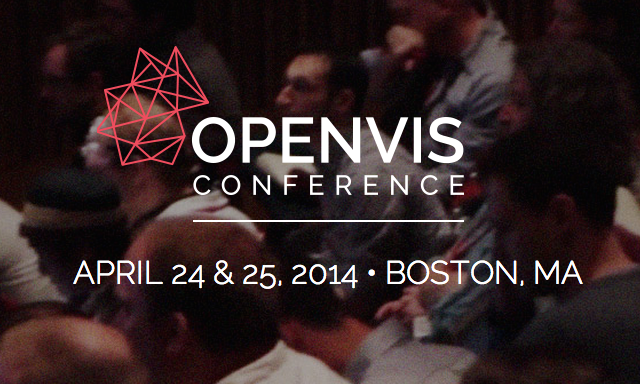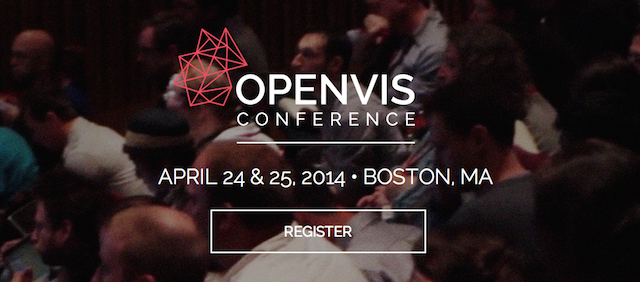In one month from now the 2014 OpenVisConf will be held in Boston, MA. Having watched coverage of the inaugural 2013 conference from afar (check out the highlight reel and watch the talks, it looked super) I am thrilled to be one of the chosen few to join the speaker line-up for this year’s two-day event.
Even had my talk proposal not been successful, I would have tried to find a way to attend. With names like Mike Bostock, Lena Groeger, Jason Sundram, Eric Fischer, Lisa Strausfield, Arvind Satyanarayan, Rob Simmon, Jen Christiansen, Marian Dörk and Kennedy Elliot, to name but a few, it promises to be another enlightening event. Congratulations to Irene and the rest of the committee for curating such a great looking event: I will do my best to warrant my invite!
My talk is titled ‘The Design of Nothing: Null, Zero, Blank’. Whilst the prospect of discussing the matter of ‘nothing’ might sound like a curious choice, I believe it will cover a topic that poses an interesting challenge frequently faced by any designer regularly working with data. Here is the more detailed abstract to give you a bit more background:
Making the visible invisible and the invisible visible will be the theme of this talk. Specifically, I will explore two sides of the design challenge posed by portraying and presenting ‘nothing’. First, the talk will examine the challenge of representing null and zero, two very different states that can offer valuable insights. How does one most effectively encode the absence of a value? How do you make ‘nothing’ visible? What can we learn from the absence of data compared to the presence of data? What are some of the most enduring representations of ‘nothing’? Second, the talk will investigate the oft-neglected power of emptiness. Blank space is a vital design component but requires sound judgement, restraint and a good deal of courage. Used well, it can unlock the perception of pattern, form and arrangement as explained by Gestalt Psychology. We will examine some of the key considerations and see examples of both the good and the bad.
Whilst I already have plenty of content to cover, I do find that any talk is unquestionably enriched by the inclusion of as many different examples and sources of insight as possible. I would therefore like to open up an opportunity for you to share your examples and experiences and I’d love to have as many different analysts, designers and developers out there contributing examples against of the following matters (fully credited and attributed, of course):
- Occasions when you have had to visualise ‘zero’ and what solutions you arrived at?
- Situations in which the absence of data (the ‘nulls’) provided insight, more-so than the presence of data?
- Examples of when you have specially utilised blank space to optimise the impact of your design?
If you have an example of how you have faced any of the above (whether successfully resolved or otherwise, not just looking for success stories!) then please do get in touch via email: andy@visualisingdata.com.
Incidentally, the reason for me being in the area for OpenVisConf is that I am running one of my one-day training workshops in Boston on Wednesday 23rd April, the day before the conference commences. If you are interested in attending, at the time of writing, there are a few places remaining so do come along!


